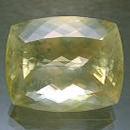|
|
||||||||||||||||
|
||||||||||||||||
|
||||||
|
|
|
|
Calcite
|
|
| | |
| Discovered in 1845; IMA status: Valid (pre-IMA; Grandfathered) | ||
|
| ||
|
Chemistry |
|
|
| |
|
CA(CO3) | |
|
|
Calcium Carbonate |
|
Molecular Weight: |
100.09 gm |
|
Composition: |
Calcium |
40.04 % |
Ca |
56.03 % |
CaO |
|
|
Carbon |
12.00 % |
C |
43.97 % |
CO2 |
|
|
Oxygen |
47.96 % |
O |
|
|
|
|
|
100.00 % |
|
100.00 % |
= TOTAL OXIDE |
|
|
|
||||
|
Classification |
|
|
| |
|
Carbonates | |
|
5/B.02-20 | |
|
|
5 : CARBONATES (NITRATES)
|
|
Related to: |
Calcite Group. Calcite-Rhodochrosite Series. Trimorphous with Aragonite and Vaterite. Isostructural with Nitratine and Otavite. |
|
Members of Group: |
Calcite Group: Calcite, Gaspeite, Magnesite, Otavite, Rhodochrosite, Siderite, Smithsonite, Spherocobaltite |
|
Varieties: |
Angels Wing Calcite, Anthraconite, Aphrite (of Karsten), Argentine, Baricalcite, Barleycorn, Bruyerite, Capreite, Cobaltoan Calcite, Crazy Calcite, Dog-tooth Spar, Dolomitic Calcite, Drewite, Ferroan Calcite, Gennoishi, Glendonite, Hematoconite, Hislopite, Iceland Spar, Kolloid-calcite, Limestone Onyx, Lublinite, Manganoan Calcite, Mexican Jade, Mg-rich Calcite, Nailhead Spar, Nickeloan Calcite, Patagosite, Pelagosite, Plumboan Calcite, Poker Chip Calcite, Popcorn Calcite, Prasochrome, Prunnerite, Pseudogaylussite, Sand-Calcite, Satin Spar Calcite, Slate Spar, Stinkkalk, Strontian Calcite, Travertine, Zincian Calcite |
|
Synonyms: |
Agyupat, Androdamas, Calcareous Spar, Calc Spar, Dragon Scales, Focobonite, Kalchstein, Kalsitla, Vaterite-A |
|
|
|
|
Crystal Data |
|
|
|
|
|
Well-formed crystals are common, thin to thick tabular, with combinations of over 1000 forms noted, to 7 m; granular, stalactitic, in concretions, massive. Over 800 different forms have been described. Most commonly as acute rhombohedrons or prismatic with scalenohedral terminations, or combinations of the two. |
|
|
At least four twin laws have been described, the most common being when the twin plane and the composition plane are {0112}. Also common with twinning on {0001} with {0001} as the compositional surface, producing re-entrant angles. Uncommon with {1011} or {0221} as twin planes, producing somewhat heart-shaped crystals ("butterfly" twins). |
|
|
|
|
|
Physical Properties |
|
|
|
|
|
Perfect on {1011} |
|
|
Irregular/Uneven, Step-like |
|
|
Brittle |
|
|
3.0 |
|
|
2.7102 (g/cm3) |
|
|
May be fluorescent under LW UV, mid-range UV or SW UV as well as under X-rays, cathode rays and even sunlight, in a number of colors and shades, commonly an intense red under SW UV with Mn as an activator (such as at Franklin, New Jersey, USA). Rarely Triboluminescent. |
|
|
Not Radioactive |
|
|
|
|
|
Optical Properties |
|
|
|
|
|
Colorless or White, also Gray, Yellow, Green, many other colors from included minerals; Colorless in transmitted light. |
|
|
Transparent, Translucent to Opaque |
|
|
Vitreous to Pearly (on cleavages). Can be dull or earthy in chalk variety. |
|
|
1.486 - 1.660 Uniaxial ( - ); anomalously Biaxial |
|
|
0.154 - 0.174 (high) |
|
|
Very Strong |
|
|
None |
|
|
|
|
|
Occurances |
|
|
|
|
|
Geological Setting: |
A major rock-forming mineral; in limestones, marbles, chalks, a common cement in clastic sedimentary rocks, and as gangue in hydrothermal veins; in alkalic to mafic igneous rocks; common as speleothems in caves. |
|
Common Associations: |
Dolomite, Celestine, Fluorite, Barite, Pyrite, Marcasite, Sphalerite (low-temperature veins); Zeolites, Chalcedony, “Chlorite” (vesicles); Talc, Tremolite, Grossular, Quartz (metamorphic); Nepheline, Diopside, Apatite, Orthoclase (igneous). |
|
Common Impurities: |
Mn, Fe, Zn, Co, Ba, Sr, Pb, Mg, Cu, Al, Ni, V, Cr, Mo |
|
Type Locality: |
Unknown |
|
Year Discovered: |
1845 |
|
View mineral photos: | |
|
|
|
|
More Information |
|
|
|
|
|
| |
|
|
|
|
Calcite is a beautiful gem that is doubly refractive and available in many colors. Calcite is very highly reactive to even the weakest of acids such as vinegar. Other important properties of Calcite are its fluorescence, phosphorescence, thermoluminescence and triboluminescence. Not all Calcite specimens demonstrate these properties but some do very well. Notable examples are speciments from Franklin, New Jersey, USA where massive forms of Calcite contain a small amount of manganese that causes it to fluoresce bright red under UV light. Some Calcite specimens from Mexico can fluoresce beautiful purple or blue colors and some rare specimens will phosphoresce (continue to glow) even after the UV source has been removed. Triboluminescence is another one of Calcite's properties but it is very difficult to demonstrate. It should occur when a Calcite specimen glows (in the dark) after being struck or put under pressure. Mexican
Onyx is a variety of Calcite but not the same as Onyx
that is a variety of Quartz. Mexican Onyx is often used
for carvings and ornamental decorations such as vases,
bookends and small animal figurines. Iceland Spar is
another variety of Calcite that is well known as the
colorless rhombohedral shaped pieces often available
in rock shops. When these pieces are placed on a newspaper
or other printed material it creates two slightly offset
images. This is because of Calcite's extreme double
refraction, or splitting of light into two beams traveling
at different speeds. |
|
|
We
have not photographed our Calcite gems yet. Please
check back soon! |
